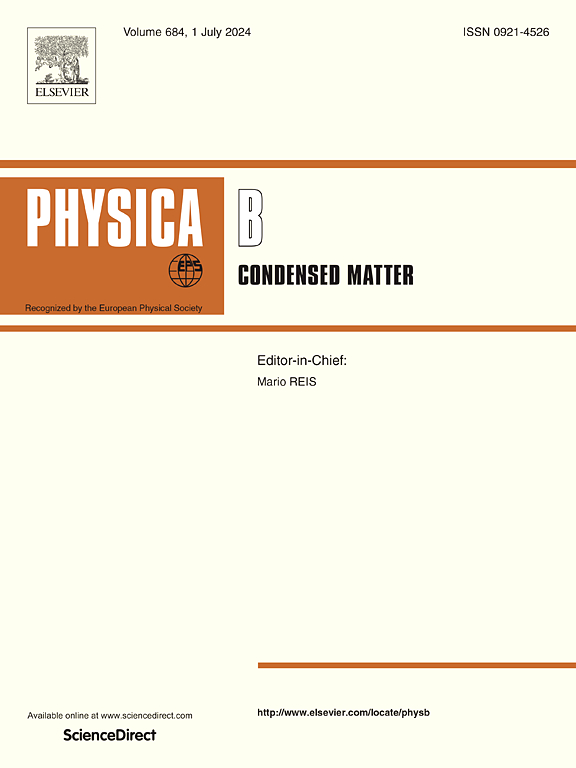Nickel to nickel oxide: A scalable two-step electrochemical approach for transparent and porous thin film fabrication
IF 2.8
3区 物理与天体物理
Q2 PHYSICS, CONDENSED MATTER
引用次数: 0
Abstract
In this study, a two-step electrochemical approach was employed to fabricate transparent and porous nickel oxide (NiO) thin films on indium tin oxide glass substrates. Initially, nickel thin films were electrodeposited from Watt's solution utilizing a two-electrode configuration under varying current densities (0.25–2 mA/cm2) and deposition times (15–60 s). The deposited films were subsequently anodized in an ethylene glycol-based electrolyte under controlled voltages (4–6 V) and anodization times (1–7 h) to achieve porous NiO structures. The structural, morphological, optical, and electrical properties of the films were characterized using a range of analytical methods, including X-ray diffraction, scanning electron microscopy, energy-dispersive X-ray spectroscopy, X-ray photoelectron spectroscopy, UV–Vis spectroscopy, Hall effect measurements, and contact angle analysis. The results indicate that optimized anodization at 4V for extended durations yielded highly porous, well-adherent NiO films with enhanced transparency (>80 %) and p-type conductivity (hole mobility up to 36.03 cm2/Vs). The electrochemical approach is scalable, cost-effective and environmentally friendly, and offers promising applications in electrochromic devices, transparent electrodes and energy storage systems.

镍到氧化镍:透明和多孔薄膜制造的可扩展两步电化学方法
在本研究中,采用两步电化学方法在氧化铟锡玻璃衬底上制备透明多孔氧化镍(NiO)薄膜。最初,在不同的电流密度(0.25-2 mA/cm2)和沉积时间(15-60秒)下,利用双电极配置从Watt的溶液中电沉积镍薄膜。然后在控制电压(4-6 V)和阳极氧化时间(1-7 h)的乙烯基电解质中阳极氧化沉积膜,以获得多孔NiO结构。利用x射线衍射、扫描电子显微镜、能量色散x射线光电子能谱、x射线光电子能谱、紫外可见光谱、霍尔效应测量和接触角分析等一系列分析方法对薄膜的结构、形态、光学和电学性能进行了表征。结果表明,优化后的4V阳极氧化时间延长可获得多孔性高、附着良好的NiO膜,其透明度提高(> 80%), p型电导率(空穴迁移率高达36.03 cm2/Vs)。电化学方法具有可扩展性、成本效益和环境友好性,在电致变色器件、透明电极和能量存储系统中具有很好的应用前景。
本文章由计算机程序翻译,如有差异,请以英文原文为准。
求助全文
约1分钟内获得全文
求助全文
来源期刊

Physica B-condensed Matter
物理-物理:凝聚态物理
CiteScore
4.90
自引率
7.10%
发文量
703
审稿时长
44 days
期刊介绍:
Physica B: Condensed Matter comprises all condensed matter and material physics that involve theoretical, computational and experimental work.
Papers should contain further developments and a proper discussion on the physics of experimental or theoretical results in one of the following areas:
-Magnetism
-Materials physics
-Nanostructures and nanomaterials
-Optics and optical materials
-Quantum materials
-Semiconductors
-Strongly correlated systems
-Superconductivity
-Surfaces and interfaces
 求助内容:
求助内容: 应助结果提醒方式:
应助结果提醒方式:


